Customer Spotlight Gary Bassett And The Sugar Creek Orchard
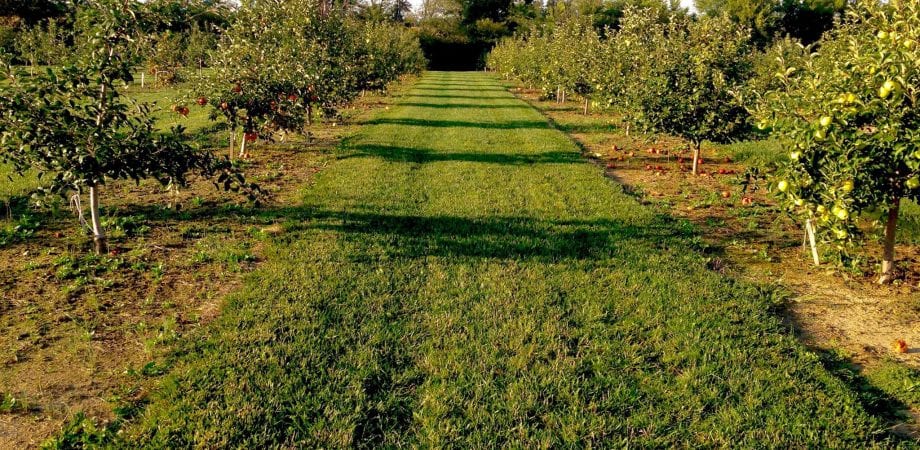
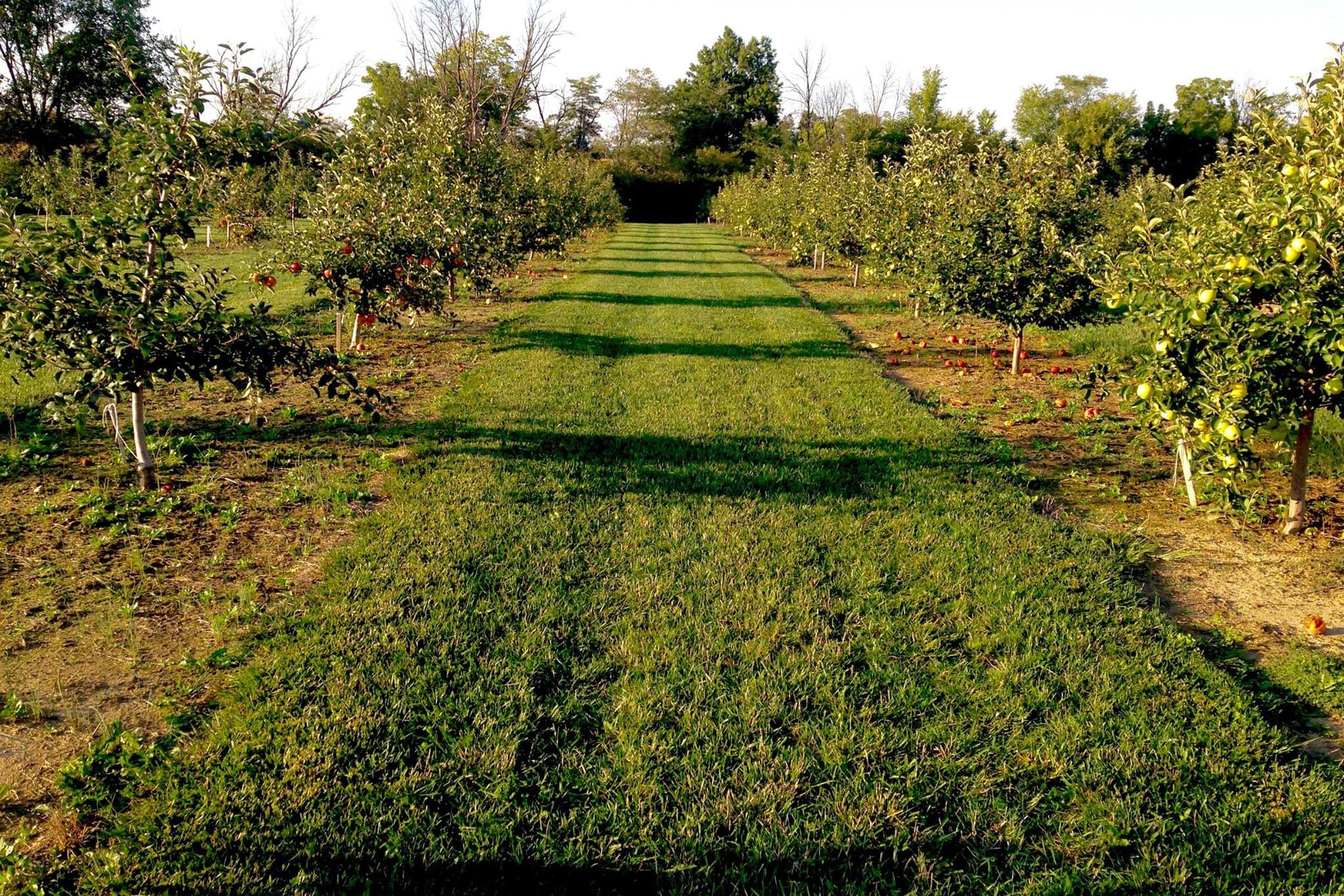 |
Sugar Creek Orchard started out on, as owner Gary Bassett relates, “little fields of corn and soybeans that were too small for big farm equipment to turn around in.” Five years later, the Sugar Creek Orchard owners have “dug 1,000 holes and planted 1,000 trees,” which have grown into a beautiful, healthy and well-manicured orchard that houses 32 different varieties of modern, sweet apples (and golf course fairway quality access ways). Here’s how the owners, Gary Bassett and his wife, Kristin, with no orchard management experience at all, created a beautiful, healthy and well-manicured orchard from scratch.
After spending 20 years out of the green industry as a programmer (he spent 20 years before that running his own residential and athletic field turfgrass business and has a degree in agronomy), Gary Bassett knew in his heart, “I’ve got to be growing something; I’ve got to be back outside, and I have to be doing something with agriculture.” That’s how 10 acres of corn and soybeans became the future grounds of an orchard.
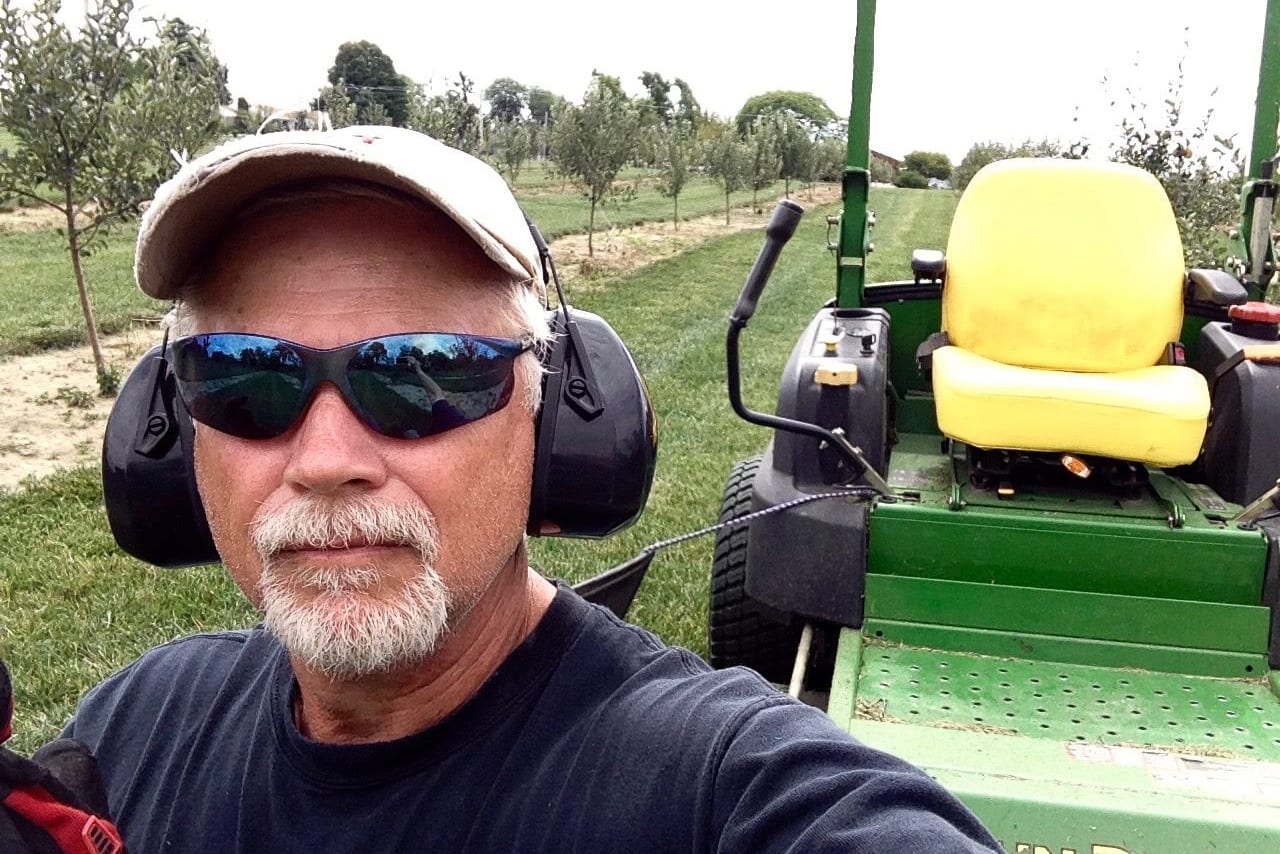 |
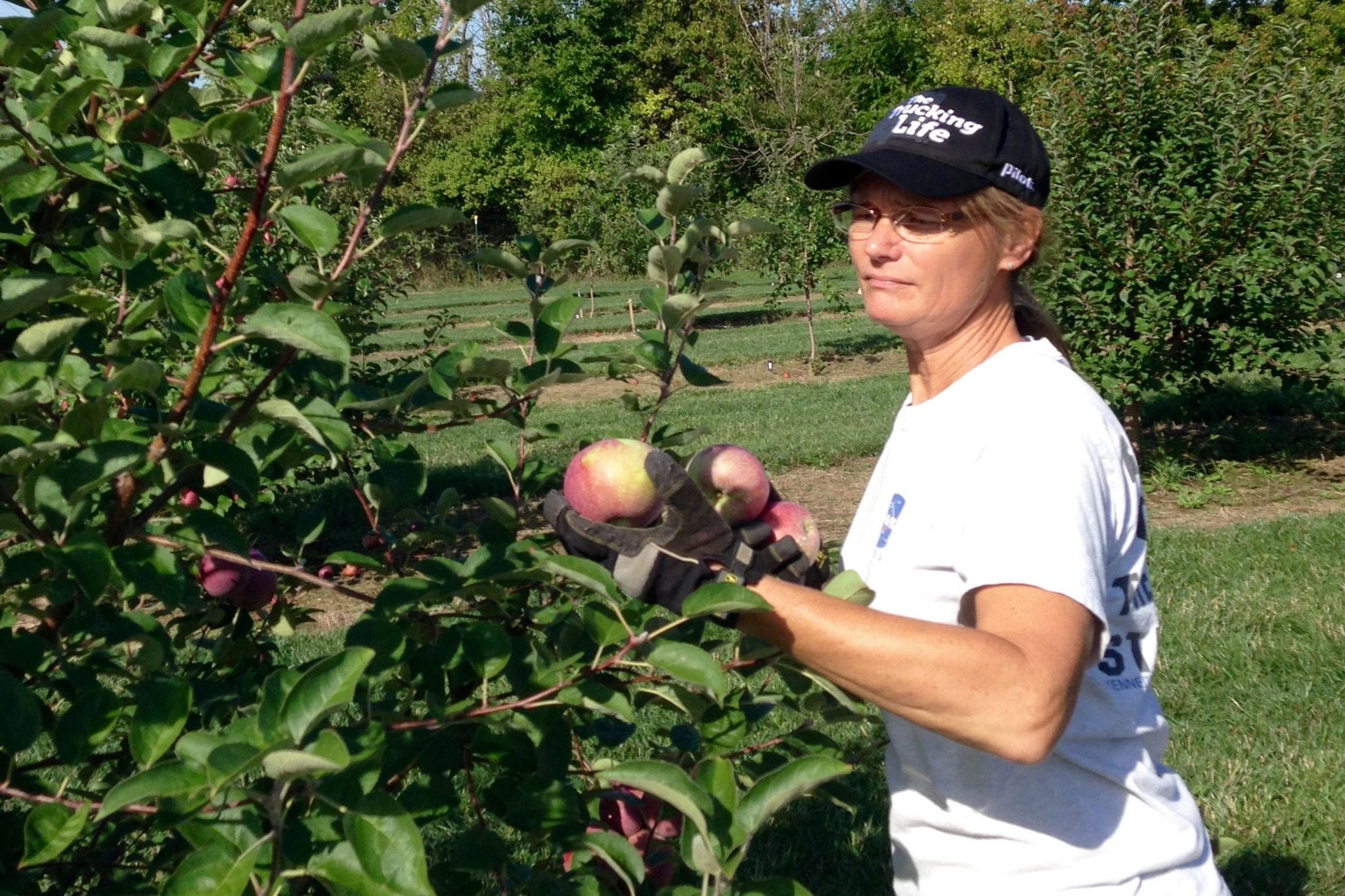 |
| Gary Bassett | Kristin Bassett |
The Creation
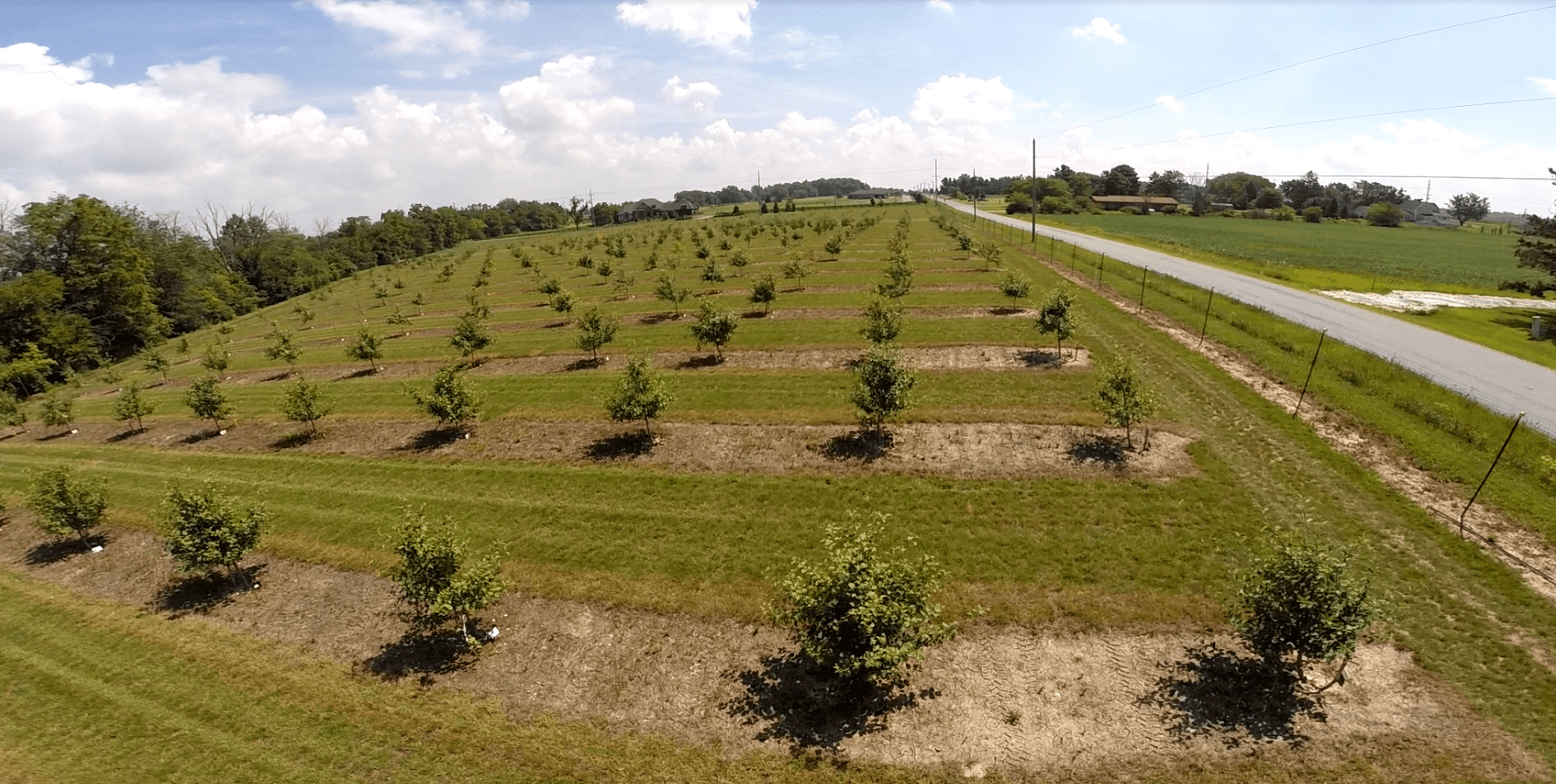 |
After securing several acres of the family farm, Gary and his wife “hit the books,” learning everything they could about creating an orchard and maintaining it. They discovered the process of orchard establishment starts with planning the layout. For instance, Bassett related that a single variety of apple tree does not pollinate itself, so it is important to look at the layout and alternate varieties from row to row.
The next phase of orchard creation is variety selection, according to Bassett. They perused hundreds of varieties, looking for those which were adapted to their growing zone and also promised good disease resistance and great flavor. Bassett related that it was no easy task “to narrow hundreds of available varieties down to the ones which seem perfect for your orchard.”
Preparing the rows for planting is another phase of orchard creation. The Bassetts decided to plant on two different sections. The first section already had tall fescue present in the ground. To keep that section’s rows clean of weeds where the planting was taking place, Bassett said they applied glyphosate. No special fertilization was done, but the bare root trees were dipped in a rooting compound before placing them in the ground.
Bassett had to establish new turfgrass on the bare ground in the second section of the orchard where soybeans grew previously. Digging and planting was relatively easy, but the rough ground needed to be tilled and dragged for a smooth and level surface in preparation for seeding the turf. Bassett selected perennial rye and turf-type tall fescue for their sturdiness and appearance.
To finish the seeding, Bassett applied a starter fertilizer and dragged the area to assure good soil contact. Bassett said, “It must have worked, as the turf came in well and established quickly.” Then he planted the trees.
The Management
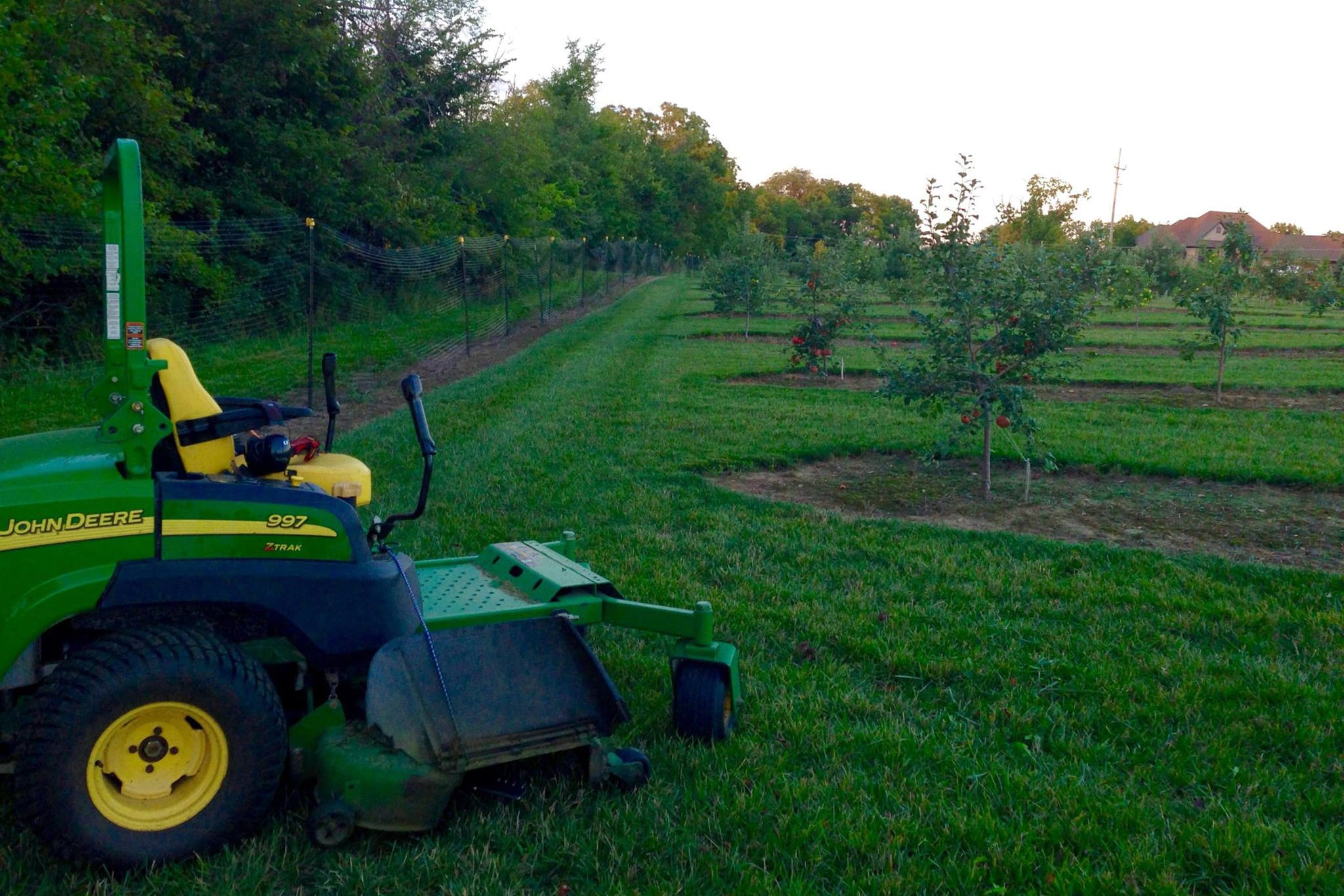 |
Bassett described the intensive management of orchards. He said, “When comparing the effort needed in one acre of orchard versus the effort in one acre of corn, there is a huge difference. With field crops, you plant and maybe spray or fertilize once or twice. You pretty much let them sit until harvest time; however, with the orchard, we are in it every week from March until Thanksgiving.” To further explain, he said, “Caring for turfgrass requires less maintenance than an orchard because, typically, turfgrass only needs fertilizing 2-3 times a year and treated with broadleaf herbicide 2-3 times a year.” Apple trees require more work.
The actual maintenance of the orchard is brimming with tasks. For instance, in the course of a ten-day cycle during the growing season, the trees are sprayed with anything they need (fungicides are sprayed the most), grass is cut, trees are inspected for issues, treated if needed, pruned if necessary, and then this is all repeated again and again. Specifically, Bassett uses several tasks to maintain the orchard that are quite similar to all turf maintenance: mowing, fertilization, fungicide control, weed control, and pest control.
Mowing is done regularly. To ensure the trees are not damageed, the mower’s distance from the trees is monitored frequently. Bassett said damaging a tree would definitely defeat the purpose of cultivating. In regards to fertilizer, Bassett uses Foliar-Pak fertilizer for foliar fertilization of the trees and a starter fertilizer to get the trees the nitrogen, potash, and potassium they need.
To get that spotless and meticulously maintained orchard Sugar Creek is known for, Bassett keeps the areas around the trees clean with herbicides, specifically Roundup, Trimec, and Roundup with Three-Way Selective herbicide. He also uses fungicides, which, as stated earlier, are sprayed on the apple trees the most, and pesticides (however very carefully). The orchard is frequently reviewed for identifiers of pest issues before they get to be a large problem.
For Bassett, orchard management and orchards themselves cannot be perfect or complete without great turf. He believes the vigor and appearance of an orchard’s turf is representative of the entire orchard operation, and from the very beginning of creating the orchard, they made turfgrass maintenance a part of the overall orchard maintenance routine. With that in mind, Bassett did not just want any turf on his orchard access ways; he wanted golf course fairway turf.
To get his golf course fairway turf, which has responded well and maintains good color and a crisp, fresh look after mowing, Bassett follows these methods:
- The grass is not allowed to get tall, but is cut weekly in season and often times on a five day schedule in the spring and fall – especially after fertilization.
- The turf is fertilized and pre-emergent herbicide is applied in the spring and fertilized again in the fall. Decorative turf in a home lawn might take 4, 5, or even 6 applications spread across the growing season, but our circumstances are a little different.
- A few weeds can be tolerated (but not many), so broadleaf weed control is applied in late April. A spot spraying for trouble spots is applied in mid June, and a full fall broadleaf control is applied in September.
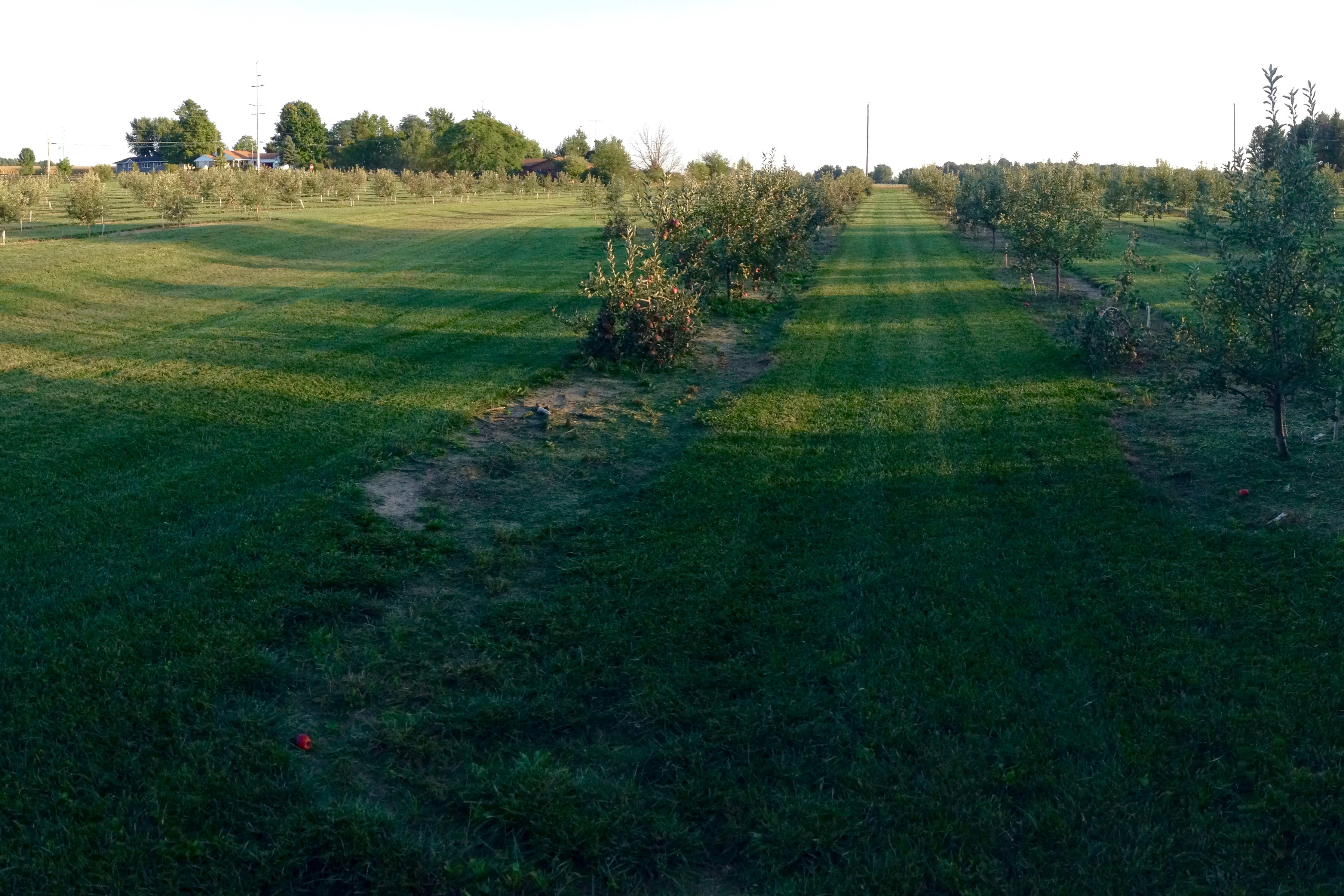 |
Bassett also relies on Steve Patton and Advanced Turf Solutions to keep his orchard and turf perfectly maintained and healthy. When he first met Steve, it was a cold, snowy day in December and he couldn’t imagine why anybody in late December would feel the need to want to go to work at a turfgrass supply house. But Steve Patton was there and incredibly helpful. Refering to Advanced Turf Solutions, Bassett said, “when it came time to order things, the terms were reasonable, you were able to get it out to me and delivered for almost nothing and it’s just been a delight to work with you people.”
While Bassett and his wife, Kristin, have done a great job maintaining their new orchard, challenges do surface. The biggest challenge they have at this point in their orchard’s growth is deer. The deer will eat and strip the leaves off the trees. They also love to eat young growth and destroy new trees that have been planted.
 |
Gary Bassett hopes the creation and maintenance of the Sugar Creek Orchard has produced more than just selling apples. He hopes it has produced a great experience; a peaceful and relaxing experience that customers can enjoy with their friends and family. So, take a trip out to the Sugar Creek Orchard and see all the great work Gary and his wife have done on the trees, apples, and turf, and see if they have succeeded in creating a great experience. We think so.
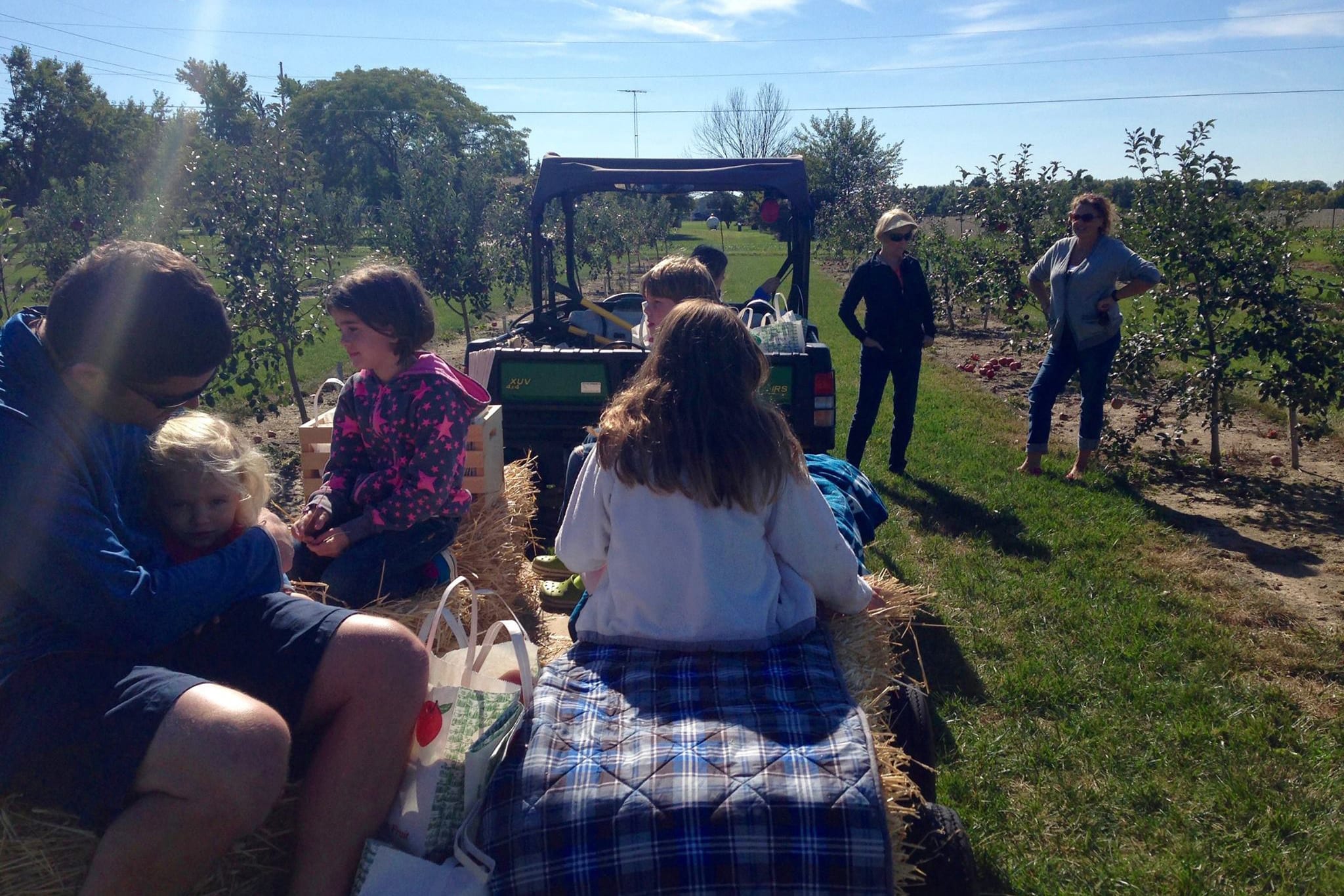 |
Visit Sugar Creek Orchard’s website, Facebook or Instagram.







